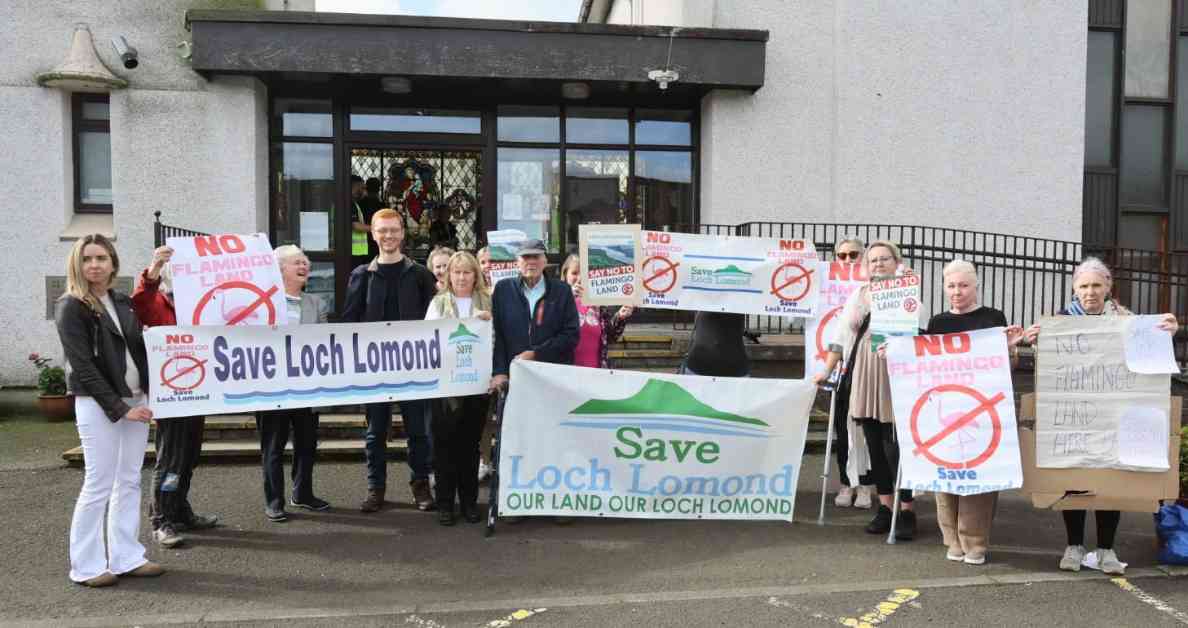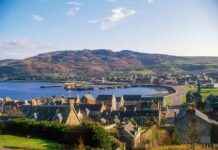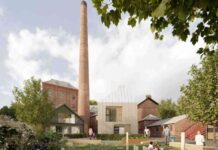Plans to construct a Flamingo Land resort on the picturesque shores of Loch Lomond have been met with resounding disapproval from the Loch Lomond & The Trossachs National Park Authority. The proposed development, known as Lomond Banks, envisioned a resort featuring woodland lodges, hotels, a monorail, a water park, and various other amenities on the southernmost point of the iconic lake.
The contentious proposal attracted over 150,000 objections from concerned individuals and environmental groups, prompting the National Park Authority to conduct a thorough review of the application. Following a site visit, hearing, and meeting at Lomond Parish Church, the final decision was made on Monday.
During the crucial meeting, a total of 13 speakers presented their views, with five expressing support for the project and eight voicing strong objections. In an effort to ensure all perspectives were heard, the authority deviated from its usual procedures to accommodate more speakers.
Despite the arguments put forth by proponents of the development, the National Park Authority ultimately turned down the application, marking the second time in five years that such plans have been rejected. The decision was met with mixed reactions, with campaigners who had gathered outside the church to protest against the project expressing relief and satisfaction.
Public Concern and Opposition
The overwhelming backlash against the Flamingo Land resort stemmed from fears of environmental degradation, increased traffic congestion, and the commercialization of a pristine natural landscape. Opponents argued that the proposed development would disrupt the delicate ecosystem of Loch Lomond and detract from its natural beauty, which draws millions of visitors each year.
Reverend Ian H Miller, one of the speakers in favor of the project, claimed that those who objected to the plans had been misled by misinformation. However, his assertions were met with skepticism by environmental groups and local residents who remained steadfast in their opposition to the resort.
Political and Legal Challenges
The rejection of the Lomond Banks proposal could potentially lead to legal challenges from developers or proponents of the project. Lawyer Ian Cowan, representing Ross Greer MSP, cautioned the National Park Authority about the possibility of a judicial review if the plans were approved. He highlighted concerns about the lack of environmental impact assessments and the potential risks posed by heavy metal contamination from the development.
Additionally, the board received advice emphasizing the importance of prioritizing the protection of the park’s natural heritage over economic considerations. This directive underscores the regulatory body’s commitment to safeguarding the ecological integrity of Loch Lomond and The Trossachs National Park, even in the face of lucrative investment opportunities.
Community Engagement and Collaboration
One of the key criticisms leveled against Flamingo Land was its alleged failure to engage with local businesses and tourism stakeholders in the planning process. Jackie Baillie, a Member of the Scottish Parliament, lamented the lack of meaningful collaboration between the developers and the surrounding community, citing a disconnect between the promises made by Lomond Banks and their implementation.
Despite assertions from project supporters about the potential economic benefits and job creation associated with the resort, concerns about the long-term impact on the local economy and environment remained at the forefront of the debate. The rejection of the development plans signifies a victory for environmental advocates and residents who prioritize the preservation of Loch Lomond’s natural splendor.
In conclusion, the unanimous rejection of the Flamingo Land Loch Lomond development plans by the National Park Authority reflects a commitment to upholding the ecological integrity and natural heritage of the region. The decision underscores the importance of community engagement, environmental protection, and sustainable development in preserving Scotland’s iconic landscapes for future generations.
































